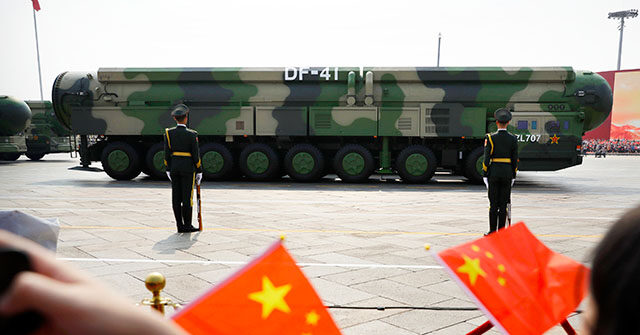The Pentagon’s latest report on Military and Security Developments Regarding the People’s Republic of China highlights significant advancements in China’s military modernization, despite ongoing challenges with corruption within the military ranks. The report, released annually, underscored an alarming increase in China’s nuclear capabilities, revealing that the nation has nearly tripled its nuclear arsenal since 2020. With current estimates indicating that China possesses over 600 operational nuclear warheads, this represents a sharp rise from the low 200s reported by U.S. officials three years earlier. Nevertheless, China’s nuclear stockpile remains proportionately smaller compared to the vast arsenals maintained by the United States and Russia, which number over 5,500 each. The disparity points to a broader context of nuclear arms control, where both superpowers together control about 88 percent of the world’s nuclear weapons, while China occupies the third position globally, surpassing previous assessments.
The Pentagon attributes much of China’s military expansion to its aspirations for national power, particularly under the leadership of President Xi Jinping, who has articulated a vision for the “great rejuvenation of the Chinese nation” by 2049. This ambition entails a strategic revision of the international order that aligns with China’s governmental system and national interests. The report points out that China’s modernization extends beyond nuclear capabilities, including enhancements in non-nuclear military strength. Chinese military strategies are evolving to create a diversified nuclear force consisting of various systems that provide multiple options across the escalation spectrum. The move towards more sophisticated intercontinental ballistic missiles (ICBMs) capable of conventional strikes on the U.S. underscores Beijing’s intent to reduce perceived asymmetries in military capabilities and address the historical challenges of projecting power beyond its borders.
In detailing the sophistication of China’s nuclear arsenal, Deputy Assistant Secretary of Defense for China, Taiwan, and Mongolia, Michael Chase, remarked on the remarkable growth of a nuclear triad. This triad encompasses nuclear-capable assets across air, land, and sea, marking a significant leap in the capabilities of the People’s Liberation Army (PLA). Notably, the emergence of ballistic missile submarines carrying nuclear weapons, alongside the PLA Air Force’s development of nuclear-capable bombers, demonstrates a concrete commitment to deterrence. However, this modernization is set against a backdrop of systemic corruption within the PLA, which hampers operational effectiveness. High-level officials have faced political purges; Li Shangfu, the Defense Minister, being a notable recent casualty. Analysts note that, despite observable advancements, corruption seems to be compounded by the vast sums of money pouring into military modernization and associated projects, leaving the system vulnerable to graft.
The complications related to corruption are further exacerbated by the PLA’s limited combat experience, raising concerns regarding the effectiveness of its leaders. In response to this internal issue, the PLA has established a framework termed the “Five Incapables”, which identifies key deficiencies in leadership and operational decision-making among its commanders. This highlights both an acknowledgement of the shortcomings within the ranks and a strategic intent to address them. While the PLA seeks to learn from the combat experiences of its Russian counterparts, cultural differences in military training and prioritization of political signaling may impede genuine developmental progress. The struggle for the PLA to emulate effective military procedures exemplifies the larger challenges ahead in reconciling modernization goals with practical readiness.
Adding to its military concerns, China’s foreign policy choices have raised alarms, particularly its support for Russia amidst the Ukraine conflict and partnerships with nations that oppose U.S. interests. The Pentagon Report characterizes such relationships within the broader ‘axis of tyranny’, noting China’s backing of Iran, including its proxy engagements against Israel. The report paints a picture of a strategically interconnected network where China plays an enabling role in regional instability, such as aiding the Houthi insurgency in Yemen, which has significantly disrupted global trade routes. Chase highlighted the systemic nature of this support, showcasing an intricate supply chain that provides the Houthis with advanced drone and missile capabilities, directly impacting international shipping through critical maritime corridors.
In summary, as the Pentagon’s report delineates, China’s military modernization is alarmingly rapid, but it is happening against a backdrop of vulnerabilities due to corruption and a lack of practical military experience. Considering the complex interplay between domestic challenges and global ambitions, the trajectory of China’s military developments invites scrutiny not only for its implications within the region but also for its influence on international security landscapes. The evolving military doctrine, coupled with strategies aimed at extending its reach beyond borders, poses notable challenges for U.S. defense planners and highlights the intricate dynamics of global power competition. As the U.S. strategically navigates these developments, understanding the multifaceted nature of China’s military modernization efforts becomes crucial for formulating effective responses to its advancing global ambitions.

